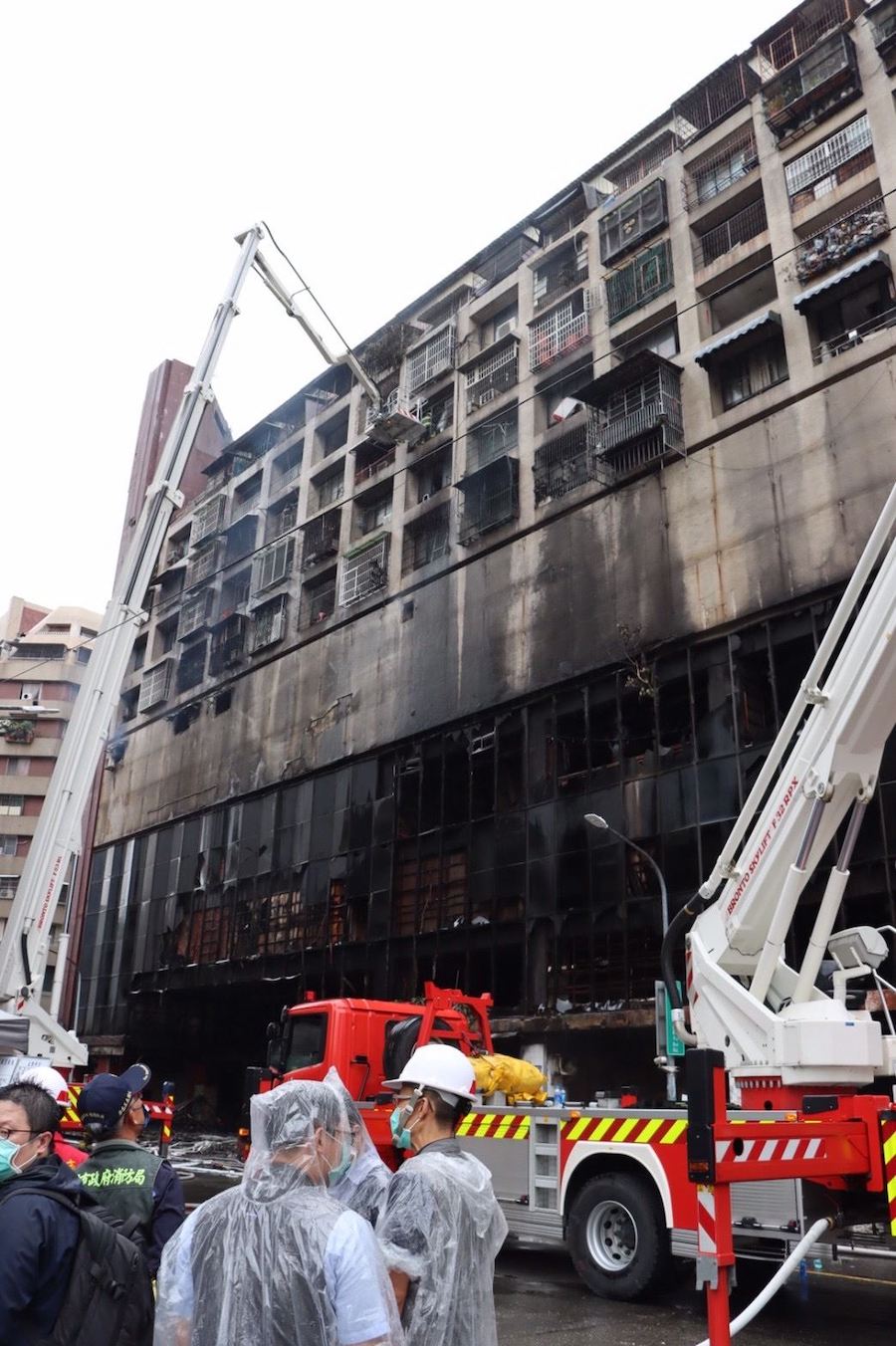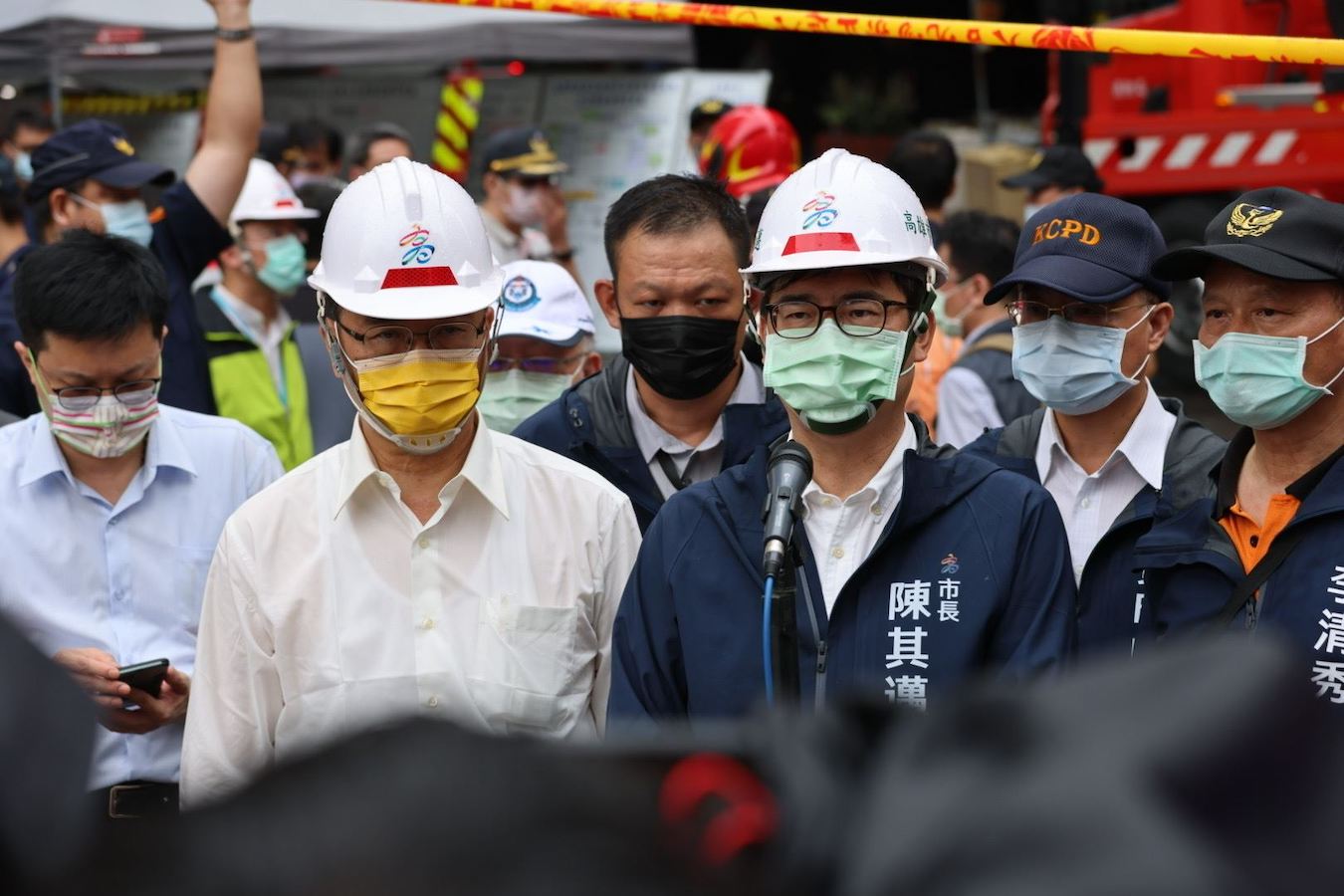by Brian Hioe
語言:
English
Photo Credit: Kaohsiung City Government/CC
46 DIED IN a building fire in Kaohsiung yesterday, with at least 41 injured. A total of 55 were taken to the hospital, with 14 found to have no signs of life, while 32 bodies were found on-site by firefighters. The fire is the deadliest in the history of Kaohsiung.
Rescuers continue to search through the wreckage for survivors and to locate bodies. 62 individuals between eight years old and 83 have been rescued.
The fire broke out in a thirteen-floor commercial and residential building, the Chenzhongcheng Building in Kaohsiung’s Yancheng district, which was widely referred to as a “ghost building”. There were reports of an explosion heard around 2:40 AM. By 2:54 AM, firefighters were notified. The fire began on the first floor and spread to the sixth floor, though most casualties were due to smoke spreading to above the seventh floor. The cause of the fire is still under investigation.
 Photo credit: Kaohsiung City Government/CC
Photo credit: Kaohsiung City Government/CC
159 firefighters in 75 firefighting vehicles were mobilized to fight the fire, which raged on for four-and-a-half hours before it was put out by 7:17 AM.
The building, which was forty years old, was partially abandoned. The building previously was home to a cinema, restaurants, and karaoke on the first to fifth floors, and some shops in underground levels, but these were mostly abandoned.
120 households lived between the seventh and eleventh floors of the building. Many residents were elderly individuals, some of which had disabilities; the average age of those that died in the fire was 62 years old. This contributed to difficulties escaping the building, with emergency stairwells blocked by items that had collected in them over the years.
According to Kaohsiung deputy mayor Lin Chin-rong, the building had been inspected four times since 2019, though access to the upper levels of the building was blocked to inspectors. Kaohsiung city council speaker Tseng Li-yen has called for inspections of old buildings regarding lacking safety equipment, as well examining electric wiring. Some city councilors have called attention to the lack of renovation for old buildings in the city that lead to such issues. Mayor Chen Chi-mai of the DPP has apologized for the incident along with his administration.
The Kaohsiung city council plans to hold a special session to discuss the incident. Likewise, the Kaohsiung District Prosecutors Office has also stated that it will form a special task force to investigate responsibility for the fire, with at least four witnesses summoned so far, and that it will devote greater efforts to locating the family members of victims and identifying bodies. Arson has not been ruled out, but it is thought that the cause of the fire may be due to flammable items left in abandoned establishments between the first and fifth floors. Reportedly, the building’s management committee was not carrying out its duties.
The partial abandonment of buildings that often elderly residents continue to reside in is not uncommon, particularly regarding sections of buildings that are constructed for commercial use, with haphazard repairs of infrastructure by the building management committee. To this extent, in addition to issues with maintaining fire safety standards, poor upkeep, and lax inspections, building construction in Taiwan often sees cost-cutting.
The Kaohsiung fire is the deadliest fire in Taiwan since a fire that killed 65 in a restaurant and karaoke bar in Taichung in 1995. However, a fire that killed six and left over fifty hospitalized in a KTV in the Linsen North Road area in May 2020 drew attention to the issue of lax inspections, seeing the KTV passed twenty inspections that had taken place since 2018. This was despite the fact that when the fire broke out, emergency lights, sprinklers, and alarms were non-functional.
Among other incidents of deaths caused by fires in recent memory include the death of four individuals and one firefighter due to a fire in a quarantine hotel in July, as well as an explosion at a factory in Taoyuan in May 2018 that left five firefighters and two factory workers dead in what was the largest loss of life of Taiwanese firefighters in eleven years.
 Kaohsiung mayor Chen Chi-mai (center-right). Photo credit: Kaohsiung City Government/CC
Kaohsiung mayor Chen Chi-mai (center-right). Photo credit: Kaohsiung City Government/CC
But the haphazard construction of Taiwanese buildings was spotlighted in incidents such as the collapse of the Weiguan Jinlong building in Tainan in February 2016 following an earthquake. After the building collapse, it was found that large cans of cooking oil were used in the building’s construction.
Cost-cutting was also a possible contributing cause to a rail crash that killed 49 in April of this year, after a truck used for construction near the tracks collided into a train leaving a tunnel near Hualien. After the incident, it was found that work should not have been undergoing at the site, and that the company had been awarded the contract despite a history of safety violations—possibly because they were cheap or due to kickbacks they provided to politicians.
The deaths in Kaohsiung yesterday, then, ultimately return to causes deeply rooted in Taiwanese society. Despite rhetoric from Kaohsiung politicians, as with these previous incidents, it would not be surprising if after a brief period of discussion, there ultimately fails to be any form of systemic change that genuinely tackles these longstanding issues.

